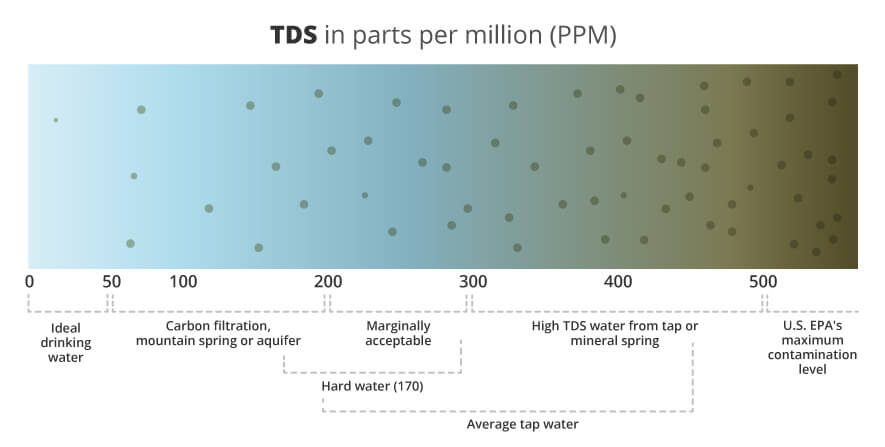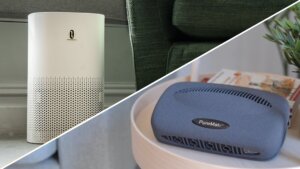What do the experts say?
For the detailed answer, I would refer to Joe Schwarcz Ph.D. from McGill Canada who says that water created by a dehumidifier is drinkable but there are risks associated with the growth of bacteria if it’s left for some time in the tank.
Andy Martin from Stanford Mag says you shouldn’t drink it, due to the fact that mildew algae and mold could form in the bucket and mentions that that metal residue from the dehumidifier could contaminate the water but doesn’t link any specific research.
In 2018, UC Berkeley released information on a device that uses a condenser similar to how a dehumidifier works to generate drinkable water when combined with a carbon filter.
I then came across this BBC news story about the Mayo Group Peru for the University of Engineering and Technology that created a device using advertising billboards to create drinking water that uses a dehumidification process combined with a carbon water filter to produce 96 liters per day.
Next, I saw this exact technique in practice over on Youtube of using a standard consumer dehumidifier from the Canadian Prepper team. He combines a dehumidifier with a portable power station connected to solar to create a device for creating water when main lines are not working. He does use a water bottle filter as he had concerns about viruses and bacteria similar to our experts Joe Schwarcz Ph.D. and Andy Martin.As of 2022, you can buy devices called Atmospheric Water Generators from Nube that use a dehumidification process with a reverse osmosis cleaning process which can provide 8 gallons or 64 pints of water per day but do come at a hefty price tag north of $1,800.
Housefresh experiment: Comparing the quality of dehumidifier water with tap water
A standard commercial dehumidifier can remove up to 30 pints of water per day and will also cost a lot less than $300. This could be a way to generate water in an emergency situation as long you are aware of the risks of bacteria from the water sitting in the container.
This isn’t something I would recommend but I wanted to see for real if I could drink the water from my dehumidifier.

I reduced the risk of contamination by using the water that had been left for only a few hours and took the precaution to look at the dissolved solid content and also do a water test normally used for well water to look for signs of bacteria, pesticide, and lead.

To start this test I used my Ebac 3850e dehumidifier and used a fairly simple TDS meter that measures the conductivity to see the levels of dissolved solids in the water. I compared this with tap water and filtered tap water.

My experiment showed that water from the dehumidifier bucket was in the range of “ideal drinking water” following the figures from the chart below:

Tap water: 54 parts per million

Filtered tap water: 45 parts per million

From dehumidifier bucket: 7 parts per million

Based on the TDS meter, this water is very close to containing no dissolved solids in the water. This doesn’t mean that the water is safe to drink as a TDS meter doesn’t know exactly what is in the water and it could still contain things like bacteria, lead, and pesticides, but it’s much closer to distilled water than normal tap water.
For the next step, I bought a well water test kit that would allow me to be confident that no bacteria, lead, or pesticide was in the water before I took a gulp.

I mixed the water with the agent and left it for 48 hours before checking the color: a yellow shade would signify the presence of bacteria, whereas a purple shade would show no bacteria were present.

As you can see in the image below the bacteria test on the water from the dehumidifier bucket came back negative:

There was still a concern about the presence of lead or pesticides so I went one step further and tested the dehumidifier for both of these substances using the Watersafe Lead Test and Pesticide Test.

As you can see in the image below, the water from the dehumidifier showed no presence of pesticides or lead.

With all test results coming back negative, I was happy to take the risk and taste the water from the dehumidifier bucket for the love of science.
So, how did it taste?

Quite weird.
But cool to know that you can drink dehumidifier water if you have no other option.
However, the low mineral content in the water gave it a strange distilled taste with no clear flavor – a stark difference when compared to the taste of tap or filtered water.
I wouldn’t want to drink it regularly, but I could see myself using it in an emergency with the help of a water filter system, as I would always be concerned about the potential of bacteria in the bucket.
One thing worth mentioning is that the water generated through dehumidification has no trace minerals that you would normally find in drinking water, such as calcium. This could create health issues if you have a deficiency in your normal diet.
I hope you never have to drink the water from your dehumidifier, but at least you know it could be possible if you have a way to clean it.







